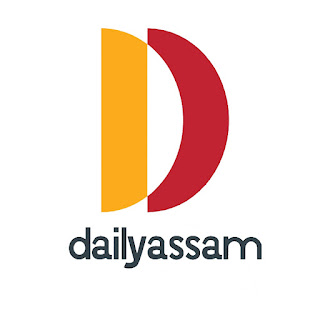ANT-HC-3016 (এএনটি-এইচচি-3016)
Unit I: Anthropological Concept of Tribe
1. Problems of nomenclature, definition and classification.
2. Features of tribes in India.
(গোট ১ : জনজাতিৰ নৃতাত্ত্বিক ধাৰণা
1. নামকৰণ, সংজ্ঞা আৰু শ্ৰেণীবিভাজনৰ সমস্যা।
2. ভাৰতত জনজাতিৰ বৈশিষ্ট্য।)
Unit II: Tribes and Wider world.
1. The history of tribal administration; Constitutional safeguards
2. Draft National Tribal Policy, Issues of acculturation assimilation and integration. Impact of development schemes and programme on tribal life
(গোট ২: জনজাতি আৰু বহল পৃথিৱী।
1. জনজাতীয় প্ৰশাসনৰ ইতিহাস; সাংবিধানিক সুৰক্ষা
2. ৰাষ্ট্ৰীয় জনজাতীয় নীতিৰ খচৰা, আকৰ্ষণীয় আত্মীকৰণ আৰু একত্ৰীকৰণৰ বিষয়। জনজাতীয় জীৱনৰ ওপৰত উন্নয়ন মূলক আঁচনি আৰু কাৰ্যসূচীৰ প্ৰভাৱ)
Unit III: Anthropological Concept of Village
1. The concept of peasantry.
2. Approaches to the study of peasants – economic, political and cultural.
3. Characteristics of Indian village: social organization; economy and changes.
4. Caste system and changes.
(গোট ৩: ভিলেজৰ নৃতাত্ত্বিক ধাৰণা
1. কৃষকৰ ধাৰণা।
2. কৃষকসকলৰ অধ্যয়নৰ দৃষ্টিভংগী – অৰ্থনৈতিক, ৰাজনৈতিক আৰু সাংস্কৃতিক।
3. ভাৰতীয় গাওঁৰ বিশেষত্বসমূহ: সামাজিক সংগঠন; অৰ্থনীতি আৰু পৰিৱৰ্তন।
4. জাতি ব্যৱস্থা আৰু পৰিৱৰ্তন।)
Unit IV: Ethnicity Issues: Tribal and peasant, movements; Identity issues
(গোট ৪: জাতিগত সমস্যা: জনজাতীয় আৰু কৃষক, আন্দোলন; পৰিচয়ৰ সমস্যাসমূহ)
ANT-HC-3026 (এএনটি-এইচচি-3026)
Biological Dimensions (জৈৱিক মাত্ৰা)
Unit 1: i..Definition and concept of the term ecology, human ecology, ecosensitivity adaptation, acclimation, acclimatization, biotic and abiotic component.
ii. Method of studying ecology
(গোট ১: অৰ্থাৎ পৰিস্থিতিবিজ্ঞান, মানৱ পৰিস্থিতিবিজ্ঞান, পৰিৱেশ সংবেদনশীলতা অভিযোজন, অনুকূলন, অনুকূলন, জৈৱীয় আৰু অজৈৱিক উপাদান শব্দটোৰ সংজ্ঞা আৰু ধাৰণা।
আই. পৰিস্থিতিবিজ্ঞান অধ্যয়নৰ পদ্ধতি)
Unit II: Bio-cultural adaptation to environmental stresses: heat, cold and altitude.
Homeostasis and thermoregulation. Ecological rules and their applicability among human beings (Gloger’s, Allen’s and Bergmann’s rule).
(গোট ২: পাৰিপাৰ্শ্বিক চাপৰ সৈতে জৈৱ-সাংস্কৃতিক অভিযোজন: তাপ, ঠাণ্ডা আৰু উচ্চতা।
হোমিওষ্টেচিছ আৰু থাৰ্মোৰেগুলেশ্যন। পাৰিপাৰ্শ্বিক নিয়ম আৰু মানুহৰ মাজত সেইবোৰৰ প্ৰযোজ্যতা (গ্লোগাৰ, এলেন আৰু বাৰ্গমেনৰ শাসন)।)
Unit III: Impact of urbanization and industrialization on Man.
(গোট ৩: নগৰায়ন আৰু ঔদ্যোগিকৰণৰ প্ৰভাৱ মানুহৰ ওপৰত।)
Unit IV: Bio-cultural factors influencing the diseases and nutritional status.
Evolution of Human diet.
(গোট ৪: ৰোগ আৰু পুষ্টিৰ স্থিতি প্ৰভাৱিত কৰা জৈৱ-সাংস্কৃতিক কাৰক।
মানৱ আহাৰৰ বিৱৰ্তন।)
Cultural Dimensions: (সাংস্কৃতিক মাত্ৰা:)
Unit V: Culture as a tool of adaptation; Various modes of human adaptation in pre-state societies.
i. Hunting and food gathering
ii. Pastoralism
iii. Shifting cultivation
(গোট ৫: অভিযোজনৰ সঁজুলি হিচাপে সংস্কৃতি; প্ৰাক-ৰাজ্যিক সমাজত মানৱ অভিযোজনৰ বিভিন্ন পদ্ধতি।
আই. চিকাৰ আৰু খাদ্য সংগ্ৰহ
আই. পশুপালন
তৃতীয়। খেতি স্থানান্তৰ কৰা)
Unit VI: Ecological themes of state formation: i. Neolithic revolution, ii. Hydraulic civilization
(গোট ৪: ৰাজ্য গঠনৰ পাৰিপাৰ্শ্বিক বিষয়বস্তু: আই। নিওলিথিক বিপ্লৱ, আইআই। হাইড্ৰলিক সভ্যতা)
Unit VII: Agriculture and peasantry; Industrial civilization and growth of urban societies Impact of urbanization and industrialization on Man.
(গোট ৭: কৃষি আৰু কৃষক; ঔদ্যোগিক সভ্যতা আৰু নগৰীয়া সমাজৰ বিকাশ নগৰায়ন আৰু ঔদ্যোগিকৰণৰ প্ৰভাৱ মানুহৰ ওপৰত।)
ANT-HC-3036 (এএনটি-এইচচি-3036)
Unit I: Concept of Biological Variability, Sources of Genetic Variation, Interpretation of Human Variation, Genetic Polymorphism (Serological, Biochemical and DNA markers).
(গোট ১: জৈৱিক পৰিৱৰ্তনশীলতাৰ ধাৰণা, আনুবংশিক তাৰতম্যৰ উৎস, মানৱ তাৰতম্যৰ ব্যাখ্যা, আনুবংশিক পলিমৰ্ফিজম (চেৰোলজিকেল, বায়োকেমিকেল আৰু ডিএনএ মাৰ্কাৰ)।)
Unit II: i. Classical approaches of classifying human population: Racial groups of mankind and racial criteria.
ii. A critical appraisal of contribution of Risley, Guha, Rickstett and Sarkar towards understanding ethnic elements in the Indian populations.
(গোট ২: আই। মানৱ জনসংখ্যাক শ্ৰেণীবদ্ধ কৰাৰ ধ্ৰুপদী দৃষ্টিভংগী: মানৱজাতিৰ জাতিগত গোট আৰু জাতিগত চৰ্ত।
আই.আই. ভাৰতীয় জনসংখ্যাৰ জাতিগত উপাদানবোৰ বুজাৰ ক্ষেত্ৰত ৰিছলী, গুহা, ৰিকষ্টেট আৰু চৰকাৰৰ অৱদানৰ এক গুৰুত্বপূৰ্ণ মূল্যাঙ্কন।)
Unit III: Pre and Proto historic racial elements in India. Linguistic classification of Indian population.
(গোট ৩: ভাৰতত প্ৰাক আৰু প্ৰোটো ঐতিহাসিক জাতিগত উপাদান। ভাৰতীয় জনসংখ্যাৰ ভাষিক শ্ৰেণীবিভাজন।)
Unit IV: Genetic diversity among Indian Population. Racial elements in NE India, with special reference to Assam
(গোট ৪ : ভাৰতীয় জনসংখ্যাৰ মাজত আনুবংশিক বৈচিত্ৰ্য। উত্তৰ-পূব ভাৰতত জাতিগত উপাদান, অসমলৈ বিশেষ প্ৰসংগৰ সৈতে)
Unit V: Recent understanding of human biological categories in the context of human genome research.
(গোট ৫: মানৱ জিনম গৱেষণাৰ সন্দৰ্ভত মানৱ জৈৱিক শ্ৰেণীৰ শেহতীয়া বুজাবুজি।)
Unit VI: Demographic Perspective
Demographic Anthropology; Sources of Demographic Data, Demographic Processes, Demographic profile of Indian populations and its growth structure.
(গোট ৬ জনগাঁথনিৰ দৃষ্টিভংগী
জনগাঁথনিমূলক নৃতত্ত্ব; জনগাঁথনিগত তথ্যৰ উৎস, জনগাঁথনিগত প্ৰক্ৰিয়া, ভাৰতীয় জনসংখ্যাৰ জনগাঁথনিগত প্ৰ'ফাইল আৰু ইয়াৰ বিকাশৰ গাঁথনি।)
ANT-HG-3016 (এএনটি-এইচজি-3016)
Unit I: Introduction
Definition and scope of archaeological anthropology, Relation with other
Disciplines. Division of Prehistoric period: Stone age and metal age; Lower
Paleolithic, Middle Middle Paleolithic and Upper Paleolithic, Mesolithic, Neolithic (Characteristic features of the period in general).
(গোট ১: পৰিচয়
পুৰাতাত্ত্বিক নৃতত্ত্বৰ সংজ্ঞা আৰু পৰিসৰ, আনৰ সৈতে সম্পৰ্ক
শাখাসমূহ। প্ৰাগৈতিহাসিক কালৰ বিভাজন: প্ৰস্তৰ যুগ আৰু ধাতুযুগ; তললৈ
পেলিঅলিথিক, মধ্য মধ্য পেলিঅলিথিক আৰু আপাৰ পেলিঅলিথিক, মেছোলিথিক, নিওলিথিক (সাধাৰণতে সেই সময়ৰ বৈশিষ্ট্য)।)
Unit II: Methods of studying archaeological anthropology: Archaeological, Paleontological and Geological Methods of classifications, Methods of Field Archaeology:
Concept of site, artifact, culture and industry, Site survey and Aerial photography Excavation: Concepts, tools and test pits. Concept of Ethno archaeology and new archaeology
(গোট ২: পুৰাতাত্ত্বিক নৃতত্ত্ব অধ্যয়নৰ পদ্ধতি: পুৰাতাত্ত্বিক, পেলোণ্টোলজিকেল আৰু শ্ৰেণীবিভাজনৰ ভূতাত্ত্বিক পদ্ধতি, ক্ষেত্ৰ পুৰাতত্ত্বৰ পদ্ধতি:
স্থান, নিদর্শন, সংস্কৃতি আৰু উদ্যোগৰ ধাৰণা, স্থান জৰীপ আৰু এৰিয়েল ফটোগ্ৰাফী খনন: ধাৰণা, সঁজুলি আৰু পৰীক্ষাৰ গাঁত। নৃতাত্ত্বিক পুৰাতত্ত্ব আৰু নতুন পুৰাতত্ত্বৰ ধাৰণা)
Unit III: Methods of Estimation of Time
Absolute dating methods ( Radio-Carbon,Potassium Argon, Dendrochronology), Relative dating methods ( Stratigraphy, Typology, Patination, Seriation, , Flurin Analysis, Varve-Clay analysis).
(গোট ৩: সময়ৰ অনুমানৰ পদ্ধতি
পৰম ডেটিং পদ্ধতি (ৰেডিঅ'-কাৰ্বন, পটাছিয়াম আৰ্গন, ডেণ্ড্ৰোক্ৰোনোলজী), আপেক্ষিক ডেটিং পদ্ধতি (ষ্ট্ৰেটিগ্ৰাফী, টাইপোলজী, পেটিনেচন, চেৰিয়েচন, , ফ্লুৰিন এনালাইচিছ, ভাৰ্ভ-ক্লে বিশ্লেষণ)।)
Unit IV: Geochronology of Pleistocene Epoch
Plio-Pleistocene Boundary
Glacial and Interglacial
Pluviation and Inter Pluviation
(গোট ৪: প্লেইষ্টোচিন যুগৰ ভূ-কালক্ৰম
প্লিও-প্লেইষ্টোচিন সীমা
গ্লেচিয়েল আৰু ইণ্টাৰগ্লেচিয়েল
প্লুভিয়েচন আৰু ইণ্টাৰ প্লুভিয়েচন)
Unit V: Typo-Technological study of the prehistoric tools
(গোট ৫: প্ৰাগৈতিহাসিক সঁজুলিবোৰৰ টাইপো-প্ৰযুক্তিগত অধ্যয়ন)
Unit VI : Bronze age culture in Indus Basin : Harappan Civilization : Sites, Town planning Architecture, Artifacts and Causes of declination .
( গোট ৬ : সিন্ধু অৱবাহিকাত ব্ৰঞ্জ যুগৰ সংস্কৃতি : হৰপ্পা সভ্যতা: স্থান, নগৰ পৰিকল্পনা স্থাপত্য, শিল্পকলা আৰু হ্ৰাসৰ কাৰণ।)
Unit VII: Megalithic Culture: Different Types of Megaliths. Megalithic culture of Northeast India
( গোট ৭: মেগালিথিক সংস্কৃতি: বিভিন্ন প্ৰকাৰৰ মেগালিথ। উত্তৰ-পূব ভাৰতৰ মেগালিথিক সংস্কৃতি)





